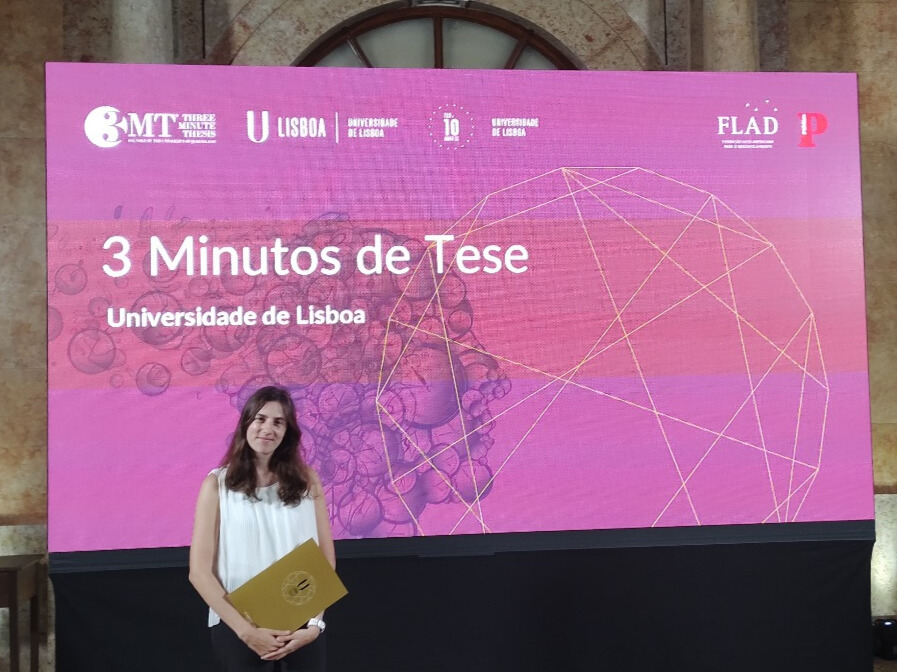
Renata Castelo Branco at the final of the 3MThesis competition with her work on algorithms to draw buildings
How can one use algorithms to draw buildings? That is the question that Renata Castelo Branco, a junior researcher at INESC-ID, from the scientific area Graphics and Interaction, and a PhD student in Computer Engineering at Instituto Superior Técnico, answered to, in three minutes and with a single slide. “An algorithm is a set of instructions for the computer to execute the house model”, she explained, during her presentation in the final of the competition 3-Minute Thesis (3MT).
Renata was speaking at the event, that took place on June 6, at the magnificent amphitheatre of the National Museum of Natural History and Science, Universidade de Lisboa (UL), with the twelve finalists coming from different faculties of UL and covering topics that go from literature, to politics and veterinary medicine.
The 3MT academic competition at Universidade de Lisboa is designed to develop unique skills in doctoral students, such as communicating complex ideas simply and creatively to diverse audiences, following the rule of spending just three minutes and using a single slide. The competition is inspired by a format developed and patented by the University of Queensland, Australia (3MT®). And under the principle that “knowledge is too important to be closed, it must reach society”, said the vice-rector of UL, Cecília Rodrigues.
Renata’s presentation was vivid, clear and with perfect timing. Prior to announcing the first prize winner, the UL rector Luís Anjos Ferreira remembered that in old days the students were not allowed in the centre stage of the amphitheatre. “Today we have the students on this side, teaching the professors”, he stressed.
Nuno Jordão, from Faculdade de Medicina Veterinária, got the first prize, with a surprising presentation about genetic manipulation of virus to fight African swine fever, Nuno Gonçalves, from Faculdade de Ciências, with a talk about rainbows in other planets reached the second place and Marco Ribeiro on third, presenting a study about political conscience in medieval artisans.
A video of all the presentations can be seen here.
Images | © 2024 INESC-ID
